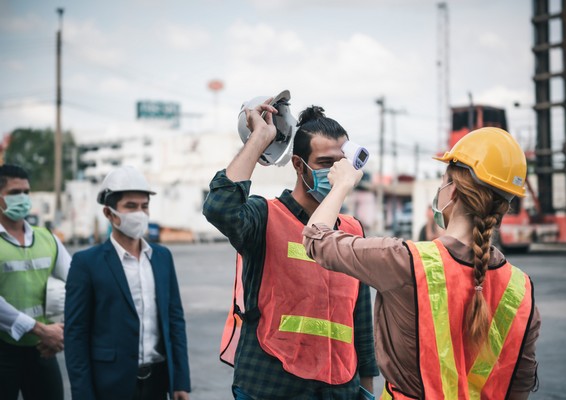
Covid-19 Construction Industry Effects
Many industries have been significantly impacted by the COVID-19 pandemic and the construction industry is no exception. Worldwide construction output has dropped significantly and this trend is expected to continue for the foreseeable future. Contractors in various business lines were faced with the challenge of completing existing projects and pursuing new work with changes in government requirements, client priorities, and mobility instructions. Here are some of the major effects of COVID-19 on the construction industry.
Managing the Supply Chain
One of the biggest impacts of the pandemic involved the supply chain. From basic materials to specialized equipment, supply chain problems presented major challenges to contractors in project execution. Lack of available resources led to skyrocketing unit prices in materials as well as delays in site delivery, impacting budgets and schedules. These increased risks to project performance resulted in many construction companies having to rethink the cash flow and compensation of subcontractors and suppliers. Construction project managers needed to devise flexible approaches for future efforts, such as securing crane service Los Angeles with nearby backup suppliers.
Navigating Labor Shortages
Another major effect of COVID-19 involved labor shortages. Employees of lead contractors, subcontractors, and oversight staff also impacted project performance, leading to missed deadlines and schedule impacts. Companies at every level needed to rethink their strategies for staffing and coordinating successful project delivery. While resource availability is almost always a risk consideration in construction, more businesses will factor in the availability of workers at every level as well as develop work schedules that allow more staffing flexibility.
Improving Collaboration
A global pandemic can have the surprising impact of inspiring unity and collaboration among competing interests. Owners, contractors, designers, and suppliers all recognize that they must work together to keep projects open and delivered according to plan. Whereas risk was individually passed along between identities before, many entities are taking a more global look at risk management for the entire lifecycle of a project. Recognizing that undue risk on one entity such as a subcontractor or designer may negatively impact the entire project has led to more intentional collaboration surrounding construction projects.
Mixing Things Up
When it comes to investment, diversity helps your portfolio weather fluctuations in the market. Similarly, the pandemic has highlighted the need for diversification of projects among business sectors, markets, and geographic boundaries. Larger, more global companies, in particular, are paying closer attention to the types of projects they pursue. Firms that operate in public infrastructure, residential, commercial, and industrial construction are better equipped to survive slowdowns and shortages in one or more sectors. We can expect to see companies be intentional about maintaining a strong mix of projects moving forward.
Beefing Up Cybersecurity
With owners, oversight staff, and other entities moving to virtual collaborative environments, the need for stronger cybersecurity measures has increased sharply. Remote work has required contractors to pay more attention to securing connections, especially for cloud-based operations. This greater reliance on remote work has forced construction companies to implement security measures protecting project files and network infrastructure from hackers and other threats. It won’t be enough for a project office to have a working Wi-Fi network. Companies and project leadership must also look for tools and products that facilitate virtual meetings and remote work with the appropriate security measures in place.
Final Thoughts
The coronavirus pandemic has forced many businesses and industries to pivot in their approach to project delivery, including the construction company. The need for improvements and additions to the built environment means contractors, owners, and other connected stakeholders must adapt quickly to changes in supply chain management, resource availability, work planning, diversification, and cybersecurity.






